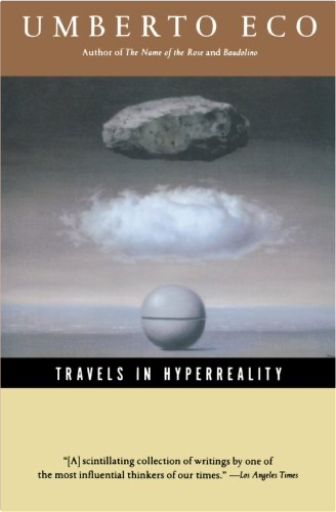 Travels in HyperrealityUmberto Eco Travels in HyperrealityUmberto Eco Eco displays in these essays the same wit, learning, and lively intelligence that delighted readers of The Name of the Rose and Foucault’s Pendulum. His range is wide, and his insights are acute, frequently ironic, and often downright funny. Translated by William Weaver. A Helen and Kurt Wolff Book 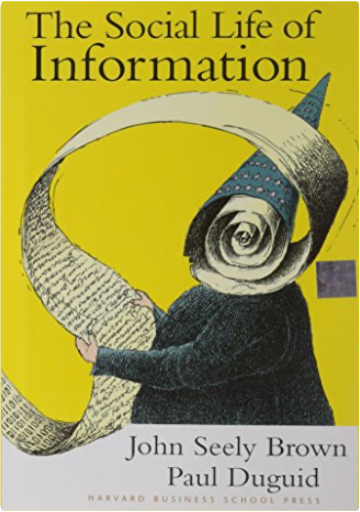 The Social Life of InformationJohn Seely Brown, Paul Duguid The Social Life of InformationJohn Seely Brown, Paul Duguid To see the future we can build with information technology, we must look beyond mere information to the social context that creates and gives meaning to it. For years, pundits have predicted that information technology will obliterate the need for almost everything—from travel to supermarkets to business organizations to social life itself. Individual users, however, tend to be more sceptical. Beaten down by info-glut and exasperated by computer systems fraught with software crashes, viruses, and unintelligible error messages, they find it hard to get a fix on the true potential of the digital revolution. John Seely Brown and Paul Duguid help us to see through frenzied visions of the future to the real forces for change in society. They argue that the gap between digerati hype and end-user gloom is largely due to the 'tunnel vision' that information-driven technologies breed. We've become so focused on where we think we ought to be—a place where technology empowers individuals and obliterates social organizations—that we often fail to see where we're really going and what's helping us get there. We need, they argue, to look beyond our obsession with information and individuals to include the critical social networks of which these are always a part. Drawing from rich learning experiences at Xerox PARC, from examples such as IBM, Chiat/Day Advertising, and California's 'Virtual University', and from historical, social, and cultural research, the authors sharply challenge the futurists' sweeping predictions.They explain how many of the tools, jobs, and organizations seemingly targeted for future extinction in fact provide useful social resources that people will fight to keep. Rather than aiming technological bullets at these 'relics', we should instead look for ways that the new world of bits can learn from and complement them. Arguing elegantly for the important role that human sociability plays, even—perhaps especially—in the world of bits, The Social Life of Information gives us an optimistic look beyond the simplicities of information and individuals. It shows how a better understanding of the contribution that communities, organizations, and institutions make to learning, working and innovating can lead to the richest possible use of technology in our work and everyday lives. 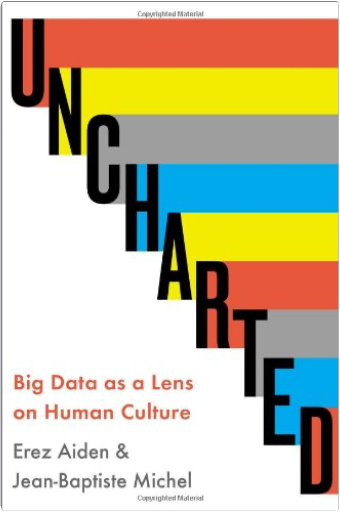 Uncharted: Big Data as a Lens on Human CultureErez Aiden, Jean-Baptiste Michel Uncharted: Big Data as a Lens on Human CultureErez Aiden, Jean-Baptiste Michel “One of the most exciting developments from the world of ideas in decades, presented with panache by two frighteningly brilliant, endearingly unpretentious, and endlessly creative young scientists.” – Steven Pinker, author of The Better Angels of Our Nature 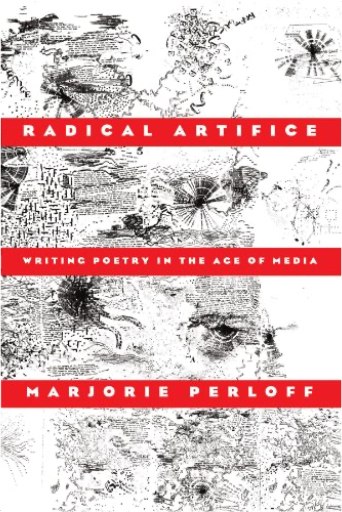 Radical Artifice: Writing Poetry in the Age of MediaMarjorie Perloff Radical Artifice: Writing Poetry in the Age of MediaMarjorie Perloff How the negotiation between poetic and media discourses takes place is the subject of Marjorie Perloff's groundbreaking study. Radical Artifice considers what happens when the "natural speech" model inherited from the great Modernist poets comes up against the "natural speech" of the Donahue "talk show," or again, how visual poetics and verse forms are responding to the languages of billboards and sound bytes. Among the many poets whose works are discussed are John Ashbery, George Oppen, Susan Howe, Clark Coolidge, Lyn Hejinian, Leslie Scalapino, Charles Bernstein, Johanna Drucker, and Steve McCaffery. But the strongest presence in Perloff's book is John Cage, a "poet" better known as a composer, a philosopher, a printmaker, and one who understood, almost half a century ago, that from now on no word, musical note, painted surface, or theoretical statement could ever again escape "contamination" from the media landscape in which we live. It is under his sign that Radical Artifice was composed. 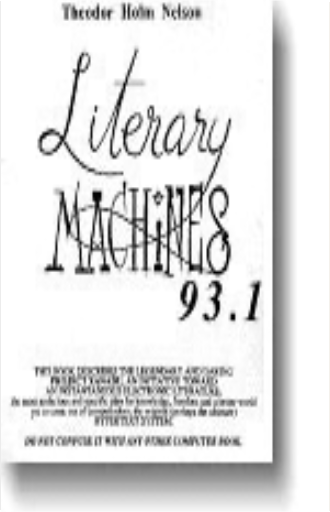 Literary Machines 93.1Theodor Holm Nelson Literary Machines 93.1Theodor Holm Nelson Paperback: 288 pages Publisher: Mindful Press (1992) Language: English  Hypertext: The Convergence of Contemporary Critical Theory and TechnologyProfessor George P. Landow Hypertext: The Convergence of Contemporary Critical Theory and TechnologyProfessor George P. Landow "In this insightful and readable volume, Landow explores the relationship between contemporary literary and social theory and the latest advances in computer software."—Voice Literary Supplement. 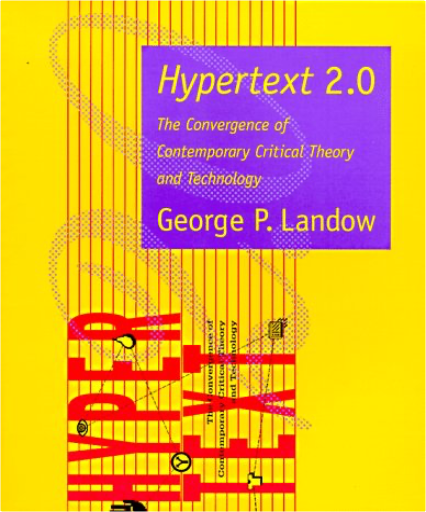 Hypertext 2.0: The Convergence of Contemporary Critical Theory and TechnologyGeorge P. Landow Hypertext 2.0: The Convergence of Contemporary Critical Theory and TechnologyGeorge P. Landow George Landow's widely acclaimed Hypertext was the first book to bring together the worlds of literary theory and computer technology to explore the implications of giving readers instant, easy access to a virtual library of sources as well as unprecedented control of what and how they read. In hypermedia, Landow saw in a strikingly literal embodiment of many major points of contemporary literary theory, particularly Derrida's idea of "de-centering" and Barthes's conception of the "readerly" versus "writerly" text. 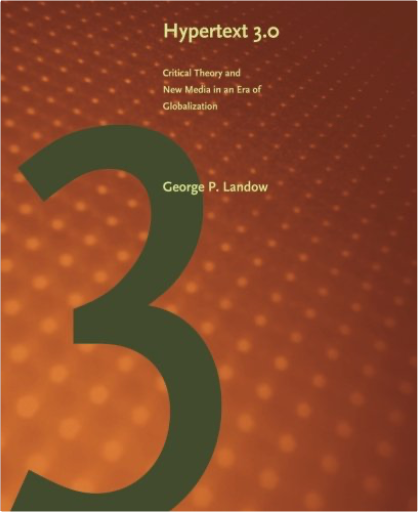 Hypertext 3.0: Critical Theory and New Media in an Era of GlobalizationGeorge P. Landow Hypertext 3.0: Critical Theory and New Media in an Era of GlobalizationGeorge P. Landow George Landow's widely acclaimed Hypertext was the first book to bring together the worlds of literary theory and computer technology. Landow was one of the first scholars to explore the implications of giving readers instant, easy access to a virtual library of sources as well as unprecedented control of what and how they read. In hypermedia, Landow saw a strikingly literal embodiment of many major points of contemporary literary theory, particularly Derrida's idea of "de-centering" and Barthes's conception of the "readerly" versus "writerly" text. 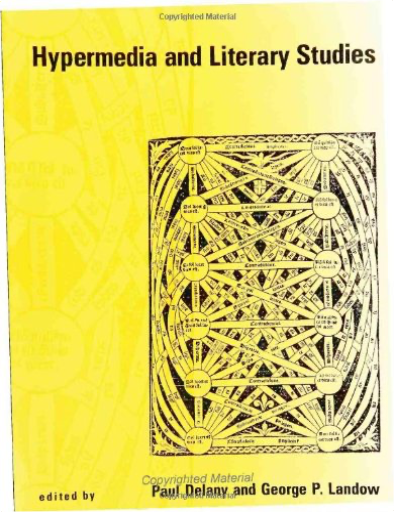 Hypermedia and Literary StudiesPaul Delany, George P. Landow Hypermedia and Literary StudiesPaul Delany, George P. Landow Consider a work from Shakespeare. Imagine, as you read it, being able to call up instantly the Elizabethan usage of a particular word, variant texts for any part of the work, critical commentary, historically relevant facts, or oral interpretations by different sets of actors. This is the sort of richly interconnected, immediately accessible literary universe that can be created by hypertext (electronically linked texts) and hypermedia (the extension of linkages to visual and aural material).The essays in Hypermedia and Literary Studies discuss the theoretical and practical opportunities and challenges posed by the convergence of hypermedia systems and traditional written texts. They range from the theory and design of literary hypermedia to reports of actual hypermedia projects from secondary school to university and from educational and scholarly to creative applications in poetry and fiction.George P. Landow is Professor of English and Art at Brown University. Paul Delany is Professor of English at Simon Fraser University, British Columbia, Canada.Contents. Hypertext, Hypermedia, and Literary Studies. Theory. Reading and Writing the Electronic Book. From Electronic Books to Electronic Libraries: Revisiting "Reading and Writing the Electronic Book." The Rhetoric of Hypermedia: Some Rules for Authors. Topographic Writing: Hypertext and the Electronic Writing Space. Reading from the Map: Metonymy and Metaphor in the Fiction of "Forking Paths." Poem Descending a Staircase: Hypertext and the Simultaneity of Experience. Reading Hypertext: Order and Coherence in a New Medium. Threnody: Psychoanalytic Digressions on the Subject of Hypertexts. Applications. Biblical Studies and Hypertext. Ancient Materials, Modern Media: Shaping the Study of Classics with Hypertext. Linking Together Books: Adapting Published Material into Intermedia Documents. The Shakespeare Project. The Emblematic Hyperbook. HyperCard Stacks for Fielding's Joseph Andrews: Issues of Design and Content. Hypertext for the PC: The Rubén Dario Project. Hypermedia in Schools.  Hyper/Text/TheoryGeorge P. Landow Hyper/Text/TheoryGeorge P. Landow In his widely acclaimed book Hypertext George P. Landow described a radically new information technology and its relationship to the work of such literary theorists as Jacques Derrida and Roland Barthes. Now Landow has brought together a distinguished group of authorities to explore more fully the implications of hypertextual reading for contemporary literary theory. 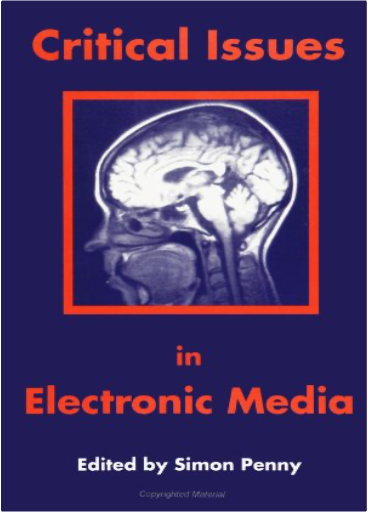 Critical Issues in Electronic MediaSimon Penny Critical Issues in Electronic MediaSimon Penny Critical Issues in Electronic Media is an interdisciplinary sourcebook that offers new critical perspectives directly related to, or arising from, the practice of electronic media art. It sketches the changing topology of culture as it enters electronic space and specifically addresses questions of art practice in that space. Some of the contributions focus on the dynamics of specific emerging media such as interactive media, while others look at the cultural conditions formed by, and forming around, new technological complexes. Still others examine contemporary technocultural manifestations against a background of social and technological history. 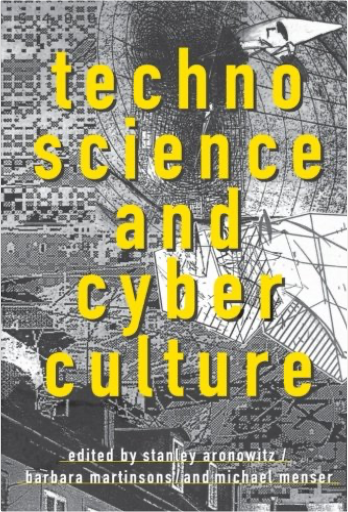 Technoscience and CybercultureStanley Aronowitz, Barbara Martinsons, Michael Menser, Jennifer Rich Technoscience and CybercultureStanley Aronowitz, Barbara Martinsons, Michael Menser, Jennifer Rich Technoculture is culture—such is the proposition posited in Technoscience and Cyberculture, arguing that technology's permeation of the cultural landscape has so irrevocably reconstituted this terrain that technology emerges as the dominant discourse in politics, medicine and everyday life. The problems addressed in Technoscience and Cyberculture concern the ways in which technology and science relate to one another and organize, orient and effect the landscape and inhabitants of contemporary culture. |
 Made with Delicious Library
Made with Delicious LibraryDenver, CO zipflap congrotus delicious library Tolva, John
